How to Dry Wet Soil: 10 Fast Methods
-

- Last updated:
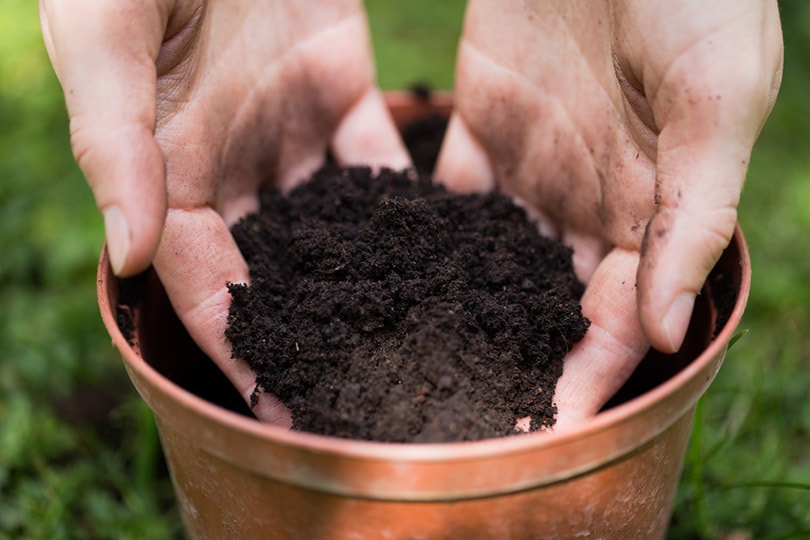
There are many reasons that you might have wet soil. Whether it’s wet soil in a pot, in your garden, or on your lawn, you don’t want waterlogged soil.
But what do you do when you have wet soil that you can’t get rid of? If you wait too long, you might end up with even more problems to deal with!
This guide highlights the most effective ways to dry out wet soil fast.

The 10 Fast Methods for Drying Wet Soil
1. Add a Drain Hole
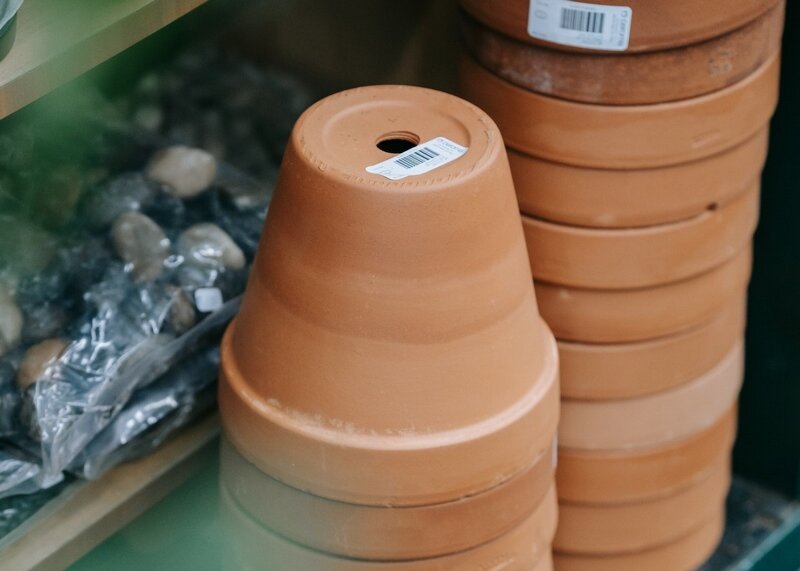
| Works For: | Potted plants |
| Effectiveness | Very |
| Ease of Completion | Easy |
If you’re trying to dry out soil in a potted plant, check the bottom of the pot. If there isn’t a drainage hole, there should be. The good news is that it’s easy to add a drainage hole to most pots.
Simply get a drill bit, and drill a hole into the bottom of the pot. However, while this will work for most pots, if you have a ceramic pot or another material that you can’t drill into without shattering it, we recommend simply repotting the plant.
If you can add a hole, then it’s great for your plants and drastically reduces the risk of you overwatering them. Even better, it’s a permanent solution. Just be sure to put a drainage mat or container underneath the pot if it’s indoors.
- Effective for potted plants
- Reduces the risk of overwatering
- Great for your plants
- Easy to complete
- Only works for potted plants
- Water will leak out under the pot
2. Move Plants to a Windy Area
| Works For: | Potted plants |
| Effectiveness | Moderate |
| Ease of Completion | Easy |
One of the best ways to keep the soil dry is to ensure that there’s adequate ventilation so the water in the soil can evaporate. If the plant is outside, try to find a slightly windy area, and if the soil is inside, try adding a fan to the room.
This typically dries out the soil quickly, and you can pair this with other methods for even faster results. Just keep in mind that while the soil might dry out, some plants can’t handle high winds.
Therefore, you might need to move the plant to a different area after a while, though the wind might still damage the plant in the meantime.
- Easy to do
- Quickly dries out most soils
- Multiple ways to do this
- Can be paired with other methods
- Potential long-term solution
- Only works for potted plants
- Some plants don’t do well in windy conditions
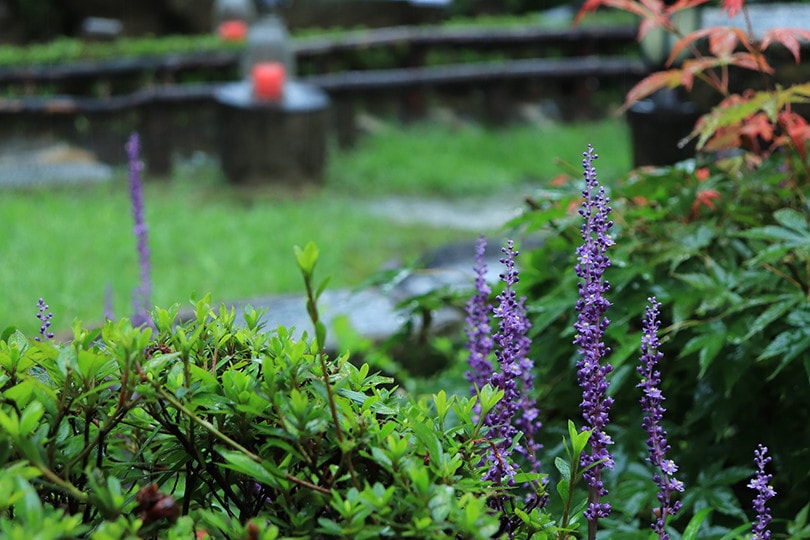
3. Put It in the Sun
| Works For: | Potted plants |
| Effectiveness | Moderate |
| Ease of Completion | Easy |
It might seem like common sense, but one of the easiest ways to dry out soil is to give it plenty of access to sunlight. But this might not be the perfect solution for you. While sunlight is extremely effective, heat is also important.
Still, don’t underestimate the effect of giving the soil a bit more light when you’re trying to dry it out. The drawback is that this method only works for potted soil, and too much sunlight can damage certain plants.
It also might take longer than you want. Still, moving the potted soil to a brighter location until things dry out is easy to do and can be paired with other methods.
- Easy to complete
- Some plants thrive with extra sunlight
- Can be paired with other methods
- Only works for potted plants
- Some plants can’t handle the extra sunlight
- Still might take a while
4. Aerate the Area
| Works For: | In-ground soil |
| Effectiveness | Moderate |
| Ease of Completion | Challenging |
If you’re trying to dry out soil that’s not in a pot, one of the most effective methods at your disposal is aerating the soil. Adding more air to the soil enables more overall airflow, which helps the soil dry out faster.
Even better, all those extra air pockets make it easier for plant roots to grow, which can lead to more effective plant growth.
But while there are many benefits to this, it’s not an instant solution to get the soil dry and takes a bit more work compared to many other methods. It also doesn’t last forever, so ideally, you should aerate the soil every season.
Finally, while this method is for in-ground soil, if you just picked up your plants from a store, you can typically get a few benefits by aerating the soil for them too.
- Most effective for large areas
- Can help plant growth
- Challenging to complete
- Doesn’t last forever
- Can take a while for wet soil to dry
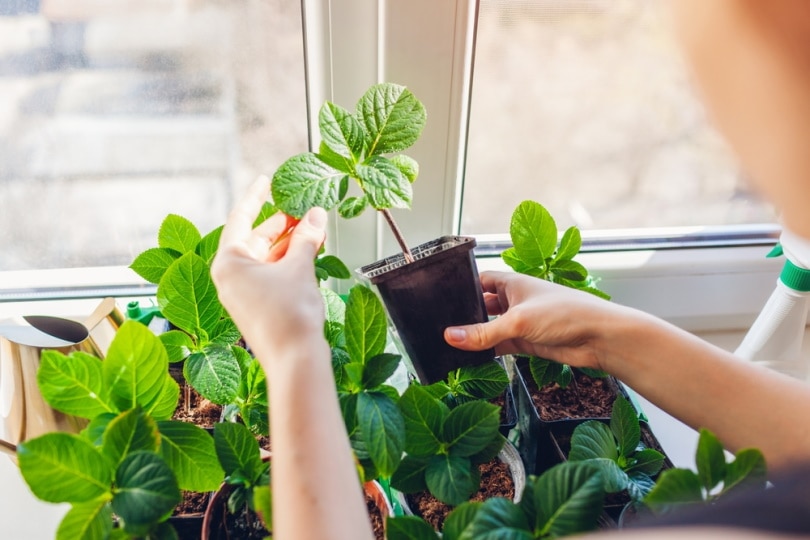
5. Add a Drying Amendment
| Works For: | In-ground soil |
| Effectiveness | Moderate |
| Ease of Completion | Easy |
If you want water out of the soil, why not add something that will soak it up for you? Pea gravel is a popular solution, but it’s not the only drying amendment out there.
Also, it’s a more effective method for large areas, and while it does a great job of drying out topsoil, it can take a while to dry out the entire soil, especially at deeper depths.
A drying amendment is an easy way to dry out soil over large areas, but getting enough for all your soil can be expensive.
- Easy to complete
- Great for large areas
- Effective for topsoil
- Can get expensive
- Might still take a while to dry the soil
6. Make a Drainage Ditch
| Works For: | In-ground soil |
| Effectiveness | Moderate |
| Ease of Completion | Moderate |
Drainage ditches have been a tried-and-proven way to dry out soil and keep it dry for centuries. It’s effective at sending water away from an area that gets too much moisture, but it requires gravity to work.
It also takes a fair amount of effort to dig the ditch, and you might just end up shifting the problem to a different location. But if you do have a place where you can safely send the extra water, this might be the long-term solution to your waterlogged soil.
It’s also fairly inexpensive to complete; you just have to put in the labor to get the job done.
- Works for large areas
- Inexpensive
- Long-term solution
- Requires a bit of effort to complete
- Not always that effective
7. Remove Mulch or Plastic
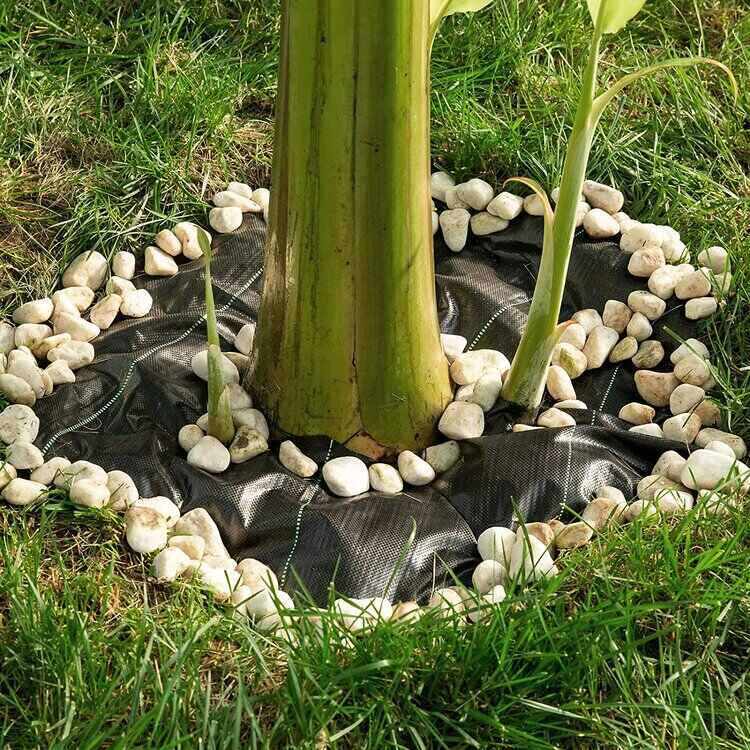
| Works For: | In-ground soil |
| Effectiveness | Moderate |
| Ease of Completion | Easy |
If you’re trying to dry out soil outside your home and there’s mulch or plastic around the area, start by removing it. While these materials can help trap warm heat that should lead to evaporation, they also catch all that evaporation and send it right back into the soil.
They limit the amount of airflow around the soil, which slows down the drying process. You’ll need to find somewhere to put the mulch or plastic, but you can put it back after the soil dries.
Just keep in mind that if the soil became waterlogged once with it there, there’s a good chance that it’ll become waterlogged again after you put it all back.
- Easy to complete
- You can put it back afterward
- Can expose plants to cold temperatures
8. Add Paper
| Works For: | Potted plants |
| Effectiveness | Low |
| Ease of Completion | Easy |
If you need an instant solution to try to dry out potted soil, paper might be the perfect solution. It’s easy to do and gives you instant results, but those results are not always ideal.
It does a great job of soaking up excess water on the surface of the soil, but it’s not the best at soaking up water from deep in the soil.
Still, it’s easy to complete and inexpensive and gives your soil instant relief. It’s worth pairing this with other solutions to get the soil dry as fast as possible.
- Easy to complete
- Instant results
- Not the most effective solution
- You might need a large amount of paper
9. Use a Hairdryer

| Works For: | Potted plants |
| Effectiveness | Very |
| Ease of Completion | Easy |
If you’re trying to dry out soil in a small pot or container, a hairdryer can be an extremely useful tool. The most effective way to dry out soil is to add heat, and that’s exactly what a hairdryer does.
It’s also an extremely easy method, even if it does take a while to completely dry out the soil. You’ll get instant results for potted soil, but keep in mind that the excessive heat that you’re aiming at the soil can potentially damage any plants there.
Still, if you need instant results for a small potted container or pot, it doesn’t get much quicker and more effective than this.
- Effective for potted plants
- Easy to complete
- Instant results
- Takes a long time
- Heat can damage plants
10. Add Lime

| Works For: | In-ground soil |
| Effectiveness | Very |
| Ease of Completion | Easy |
When construction workers need soil to be dried out fast, they turn to lime because it’s an effective drying agent and easy to spread out over large areas.
If you have a similar situation, lime might be the answer. Just know that it’s not a long-term solution, it’s just a way to get the soil dry immediately.
It’s also a bit expensive, so it’s not something that you’ll want to keep purchasing to dry out soil.
- Effective for large areas
- Easy to complete
- Expensive
- You will have lime all over your yard
 Conclusion
Conclusion
Now that you know about a few different methods to dry out wet soil, it’s up to you to put in the necessary work to dry everything out and get it as good as new. Keep in mind that if you end up with waterlogged soil once, if you don’t do anything different in the future, you’ll just get waterlogged soil again!
See also: How to Dry Up a Wet Yard Fast (8 Tips & Tricks)
Featured Image Credit: rolkadd, Shutterstock
Contents
 Conclusion
Conclusion